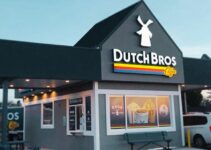Swot analysis of Panera Bread. Panera Bread Company is a US café-bakery fast-food chain restaurant company. Louis Kane, Ronald M. Shaich, and Ken Rosenthal are the founders of Panera Bread, and they laid the foundation of the company in 1987. The headquarter of the company is in Sunset Hills, Missouri, USA.
Panera Bread’s main products and services are;
- Supply Sweets,
- Cream Cheese,
- Tuna,
- Farm Produce,
- Fresh Dough,
- Complementary Products,
- Custom Roasted Coffee,
- Salads,
- Soups,
- Pastries,
- Muffins,
- Bagels,
- Sandwiches,
- Freshly Baked Products
According to an estimate, the annual revenue of Panera Bread in 2020 was 5.9 billion dollars. The company has employed more than 52000 employees to manage its operations. However, the company is operating its business in the USA and Canada and has got more than 2000 location points in those markets.
Panera Bread’s top competitors are;
- Subway,
- Tim Hortons,
- Dine Equity,
- McDonald’s,
- Starbucks,
- Dunkin Donuts,
- Wendy’s,
- Chipotle,
- Ark Restaurant,
- Burger King,
- KFC,
- BJ’s Restaurant,
- The Melt.
Today, we’ll discuss the swot analysis of Panera Bread. It’s going to focus on the internal and external factors impacting North America’s leading chain restaurant company. Here’s the swot analysis of Panera Bread as follows;
Strengths of Panera Bread
Free Delivery
The worldwide lockdown has restricted all outdoor activities and shut people to their houses. Panera Bread started offering free home delivery services to customers. It attracted the attention of a lot of new customers.
Customer Focused
Panera Bread is a highly customer-focused organization. In fact, it’s not only limited to satisfying the needs and wants of customers. But it also deeply cares about the likeness and dislike-ness of customers. However, the company launched a Panera 2.0 customer strategy to address the checkout issues of customers.
Segment Position
Panera Bread is following a niche-focused strategy, and it targets only a specific segment of the customer market in the demographic. It has increased the success rate of the company. For instance, the target demographic market of the restaurant comprises millennials aged from 25 to 44 years old.
Digital Marketing
Panera Bread is very active on social media platforms like Facebook, Twitter, Instagram, LinkedIn, and others. It has allowed the company to establish a large database of loyal followers. The company uses these platforms to connect with its target customer market.
Healthy Products
Panera Bread is aware of healthy diet trends. That’s why the chain restaurant company removed approximately 122 ingredients from its menu in 2017. Like sweeteners, sodium nitrite, sodium benzoate, flavors, artificial colors, etc.
Product Portfolio
Panera Bread offers a variety of products and services to its customers. The menu ranges from pastries, snacks, salad sandwiches, and many others. However, the diverse menu allows the restaurant to target different types of customers.
E-commerce
Approximately more than 37% of Panera Bread’s business was from its e-commerce store with a worth of 1.7 million dollars weekly. It was before the pandemic crisis. However, the pandemic and the worldwide lockdown has significantly increased the sale and growth of the company’s online store.
Creative & Innovative
Whether it’s automation processes, e-commerce, and in-store order, Panera Bread has invested a plethora of resources in the development of technology. It has given the company a unique competitive edge over competitors. Most importantly, the usage of technology and innovative approaches has brought convenience and efficient processes.
Smart Decision
Panera Bread uses technology and customers’ data before making any decision. It helps the company to minimize bad decisions. For instance, the restaurant’s decision of launching breakfast by the name of “ultimate portable on-the-go breakfast” was following the same data-driven method. It increased the company’s sales by approximately 30% and online sales by 2 billion dollars.
Weaknesses of Panera Bread
Controversies
Panera Bread’s founders have a complicated relationship with the law and the company has to face a legal battle over the issue of biased hiring processes. Such controversies and lawsuits have done a lot of negative marketing of the company.
Automation
The innovative tech approaches and automation processing have no doubt increased the efficiency of Panera Bread. On the other hand, it has replaced the human touch and warm smile. That’s why the quality of customer service of the company has declined because of the machines and applications.
National Operations
As we know that Panera Bread has more than 2000 location points in the US and Canadian markets. It shows low diversification of the company’s assets in only two markets. It would be devastating to the company’s business in case of any socio-economic challenge.
Conflict with Investors
The management of Panera Bread and investors have had many conflicts over many things. If the such conflict persists, it would weaken the chain restaurant company internally.
Opportunities available to Panera Bread
Subscription
Panera Bread has recently started a subscription package like tech companies Amazon and Netflix. It was under the name of “MyPanera+Coffee” and offered unlimited coffee full day at 8.99 dollars per month. However, the restaurant should offer more subscription packages.
Market Expansion
The target market of Panera Bread is very limited, only millennials ranging from 25 to 44 years old. However, the restaurant company should expand its customer market by offering more products like groceries and other food items.
Diversification
The breakfast offer decision turned out to be successful for Panera Bread. Therefore, the company should make similar decisions and launch different offers. It would help the company to diversify its portfolio.
Global Expansion
Panera Bread is only operating its business in the North American market. The global market is full of opportunities with a much bigger pool of potential customers.
Threats Panera Bread has to face
Global Economic
The global economic crisis, increased fuel prices, and inflation has a significant impact on Panera Bread. The uncertain economic circumstances are pushing the company to take drastic measures like adding groceries to the portfolio in order to minimize the losses.
Competitors
McDonald’s, KFC, Starbucks, Chipotle, and Dunkin Donuts are some of the main competitors of Panera Bread. Their growth is limiting the market share of the chain restaurant brand.
Food Scarcity
Flooding and drought rise severe issues of food scarcity. When it becomes scarce, then it becomes difficult for the company to run various operations smoothly.
Conclusion: Panera Bread Swot Analysis Example Company
After a careful study of the swot analysis of Panera Bread, we’ve concluded that Panera Bread is indeed North America’s leading chain restaurant company. Increasing competition, pandemic, limited diversification, controversies, and conflicted relations with investors are some of the main challenges. Panera Bread should diversify its portfolio and expand its market in order to address these issues.

Ahsan Ali Shaw is an accomplished Business Writer, Analyst, and Public Speaker. Other than that, he’s a fun loving person.


